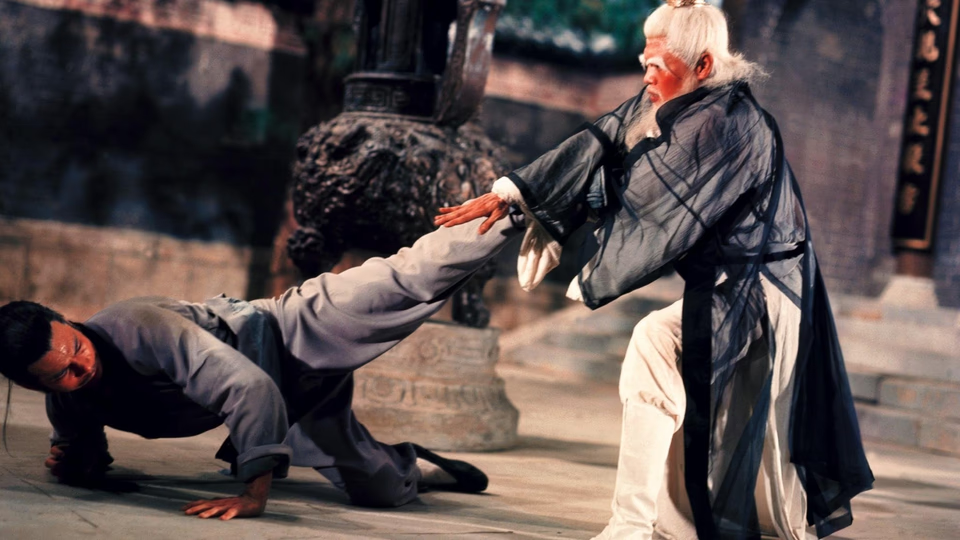Executioners from Shaolin

In the grand tradition of kung fu cinema, where heroes must discover increasingly inventive ways to defeat seemingly invincible villains, Executioners from Shaolin introduces what might be the genre’s most peculiar innovation: the weaponized crotch. You read that correctly. The film’s villain, a traitorous Shaolin priest named Pai Mei, has transformed his nether regions into a trap for unwary fighters who dare attempt the most obvious of attacks. It’s a detail that would be merely amusing if the film didn’t seem so fascinated by it, returning to this particular well no fewer than three times.
This fixation on the groin area extends beyond combat. In one particularly bizarre sequence, two newlywed kung fu masters engage in what must be cinema’s most unusual consummation scene, with the bride challenging her husband to pry apart her legs, locked in an unbreakable crane stance. It’s the kind of scene that makes you wonder if you’re still watching the same movie that opened with a magnificently staged battle.
That opening sequence, I must note, is truly impressive. Shot on location with a considerable number of extras, it presents a dynamic battle complete with weapons, arrows, and culminating in the kind of noble death scene that gives kung fu films their mythic quality. The production values throughout remain high, with real wooden ships dotting river scenes and authentic period locations replacing the usual recycled studio sets (though one shot betrays the illusion with modern vessels visible in the background).
The story follows Hung Hi-kuan, a Shaolin survivor who spends years preparing to avenge his temple, only to pass the torch of vengeance to his son, Wen-ting. It’s in this generational shift that the film most noticeably struggles with tone. While Hi-kuan’s story carries the weight of tragedy, his son (whose dubbed name sounds unfortunately like “Wing Ding”) appears in flowery shirts and ribboned hair buns that make him look more like Princess Leia than a kung fu hero.
Lo Lieh, as the villainous Pai Mei, provides the film’s strongest performance. He imbues his character with a delicious amorality that elevates every scene he’s in, even the more questionable ones involving his character’s unique fighting style. When he taunts his opponent with “Can’t you find it?” during one particularly memorable confrontation, you’re not sure whether to laugh or cringe, but you can’t look away.
The film’s greatest strength might be its willingness to experiment with the formula, even if not all experiments succeed. The integration of crane-style kung fu with traditional Shaolin techniques provides some genuinely innovative fight sequences, and when the film focuses on action rather than anatomical absurdity, it delivers some of the genre’s more memorable sequences.
Executioners from Shaolin is a film that somehow manages to be both better and worse than it should be. Its high production values and ambitious action sequences suggest a serious martial arts drama, while its tonal shifts and peculiar preoccupations place it firmly in the realm of cult curiosity. It’s the kind of film that will either delight or perplex viewers, depending on their tolerance for the genre’s more eccentric offerings.
One thing’s certain: you won’t soon forget it, though whether that’s a blessing or a curse might depend on your comfort level with extended discussions of martial arts crotch mechanics.